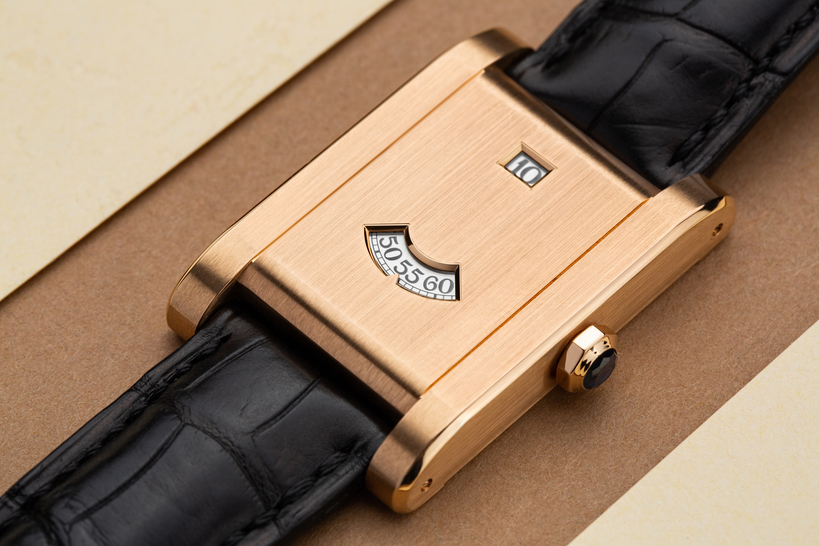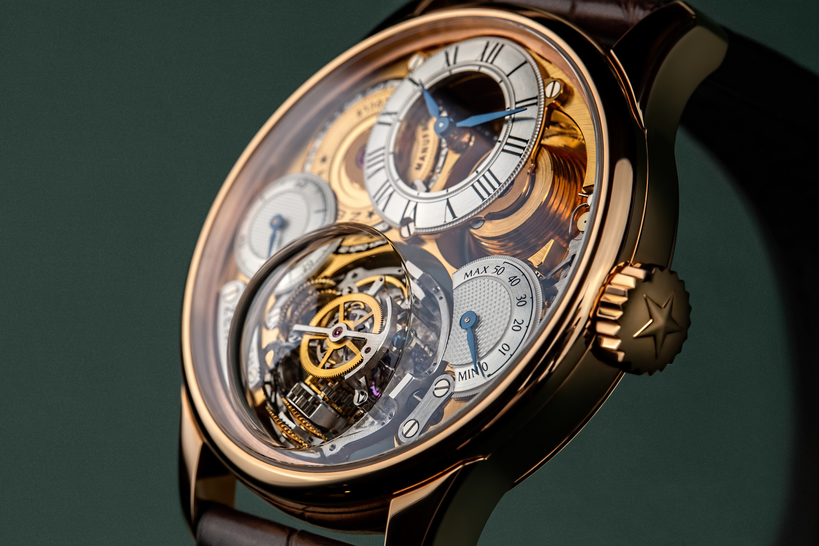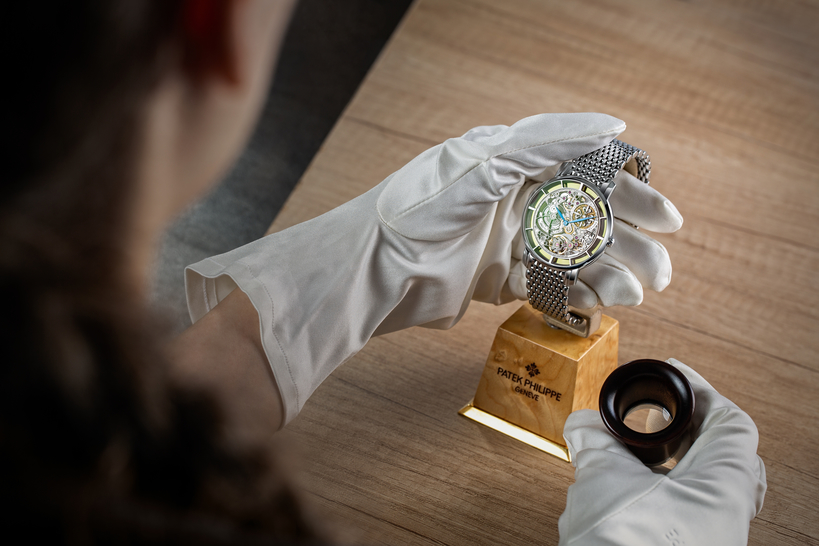What should be expected from the 104th auction planned to be held on the 22nd of May 2021 in the German Mannheim?
Today it is becoming evident that the market of secondary watch luxury is experiencing a boom. Despite the pandemic, according to the recent research by Consulting Group, the volume of sales of secondary watches increased to $16 billion, and besides, it was not only large, world-famous but also small-scale auction houses that contributed to this number.
Auction house Dr. Crott was founded by doctor Helmut Crott in 1975. After many years of dedication to business, the committed inspirer and the head of the auction house decided to retire, leaving his successful business to a big fan of watch art, Stefan Muser. In 1994, the firm moved to the German Mannheim (near Frankfurt am Mein), the excellent infrastructure that provided the firm with easy access to an ever-growing international base of clients.
The proof of their professional competence is not only the multiple publications about watch auctions and the quality of vintage watches but also detailed thoroughly developed auction catalogs Auktionen Dr. Crott. Annually, among many of the auction pieces carefully picked by the auction house team, there are sometimes quite rare (and more often than on other auction, the Glashütte ones) chronometric extravagances, as well as ancient pocket watches and snuffboxes.
Due to obvious reasons, recently, the dynamics of the auctions (besides the anniversary event, in which there were only symbolic 100 lots presented) has insignificantly lowered. So, if the 95th session comprised 603, and the 102nd one out of 568 lots, the last session collectors were only presented with 418 lots.
Restrictions due to Covid-19 worried the organizers and caused specific questions that were never raised before: a strict number of members, having to ensure a particular distance between the seats, having glass walls between the members, and, of course, masks. Despite the difficulties with all of the security measures, the auction showed impressive results.
For instance, a rare flyback-chronograph from A.Lange & Söhne, “Datograph” was bought for an astonishing amount of 77 500 Euros (with the lowest estimate being 30 000 Euros), and one of the Patek Philippe Nautilus Jumbo was purchased by a private collector for 112 500 Euros (with the estimate starting at 40 thousand).
Online auctions are not going to be short-term. According to Stefan Muser, successful online auctions (as well as presentations of most of the lots on an online platform) are a big success for the Dr. Crott house. Currently, many people start to rethink the value of physical assets and pay even more attention to them than in the before Covid era.
That is why we will talk about some of the exciting lots (out of a total of 459), which will be presented to potential customers during the 104th auction, which is to take place on Saturday, the 22nd of May 2021.
Lot № 15
The spectacular female watch from the locomotive of the Saxony watch production, made at the beginning of the century, is interesting from both historical and collection points of view. It was owned by the Cabaret family, which is now outside of the brackets of the actual brand book.
The Cabaret was launched in 1994 and is no longer in production; it is the only square movement A. Lange & Söhne ever produced. The delicately decorated mechanism with manual winding can be seen from the backside made out of sapphire. Not only the legendary ¾ plate with Glashütte stripes but also the rare spring fine adjustment, most often present in vintage pocket watches, can be seen through the backside.
Both the case and the bracelet of the lot are made out of white 18-carat gold; the silver dial is painted into saturated blue color. The bezel of the model has 46 diamonds of Top Wesselton VVS quality, and 434 (of approximately 7 carats) are in the watch's bracelet. The watch is a part of the family, which is limited to less than 12 pieces and comes with the original box and the guarantee certificate.
Estimate: 30 000 – 60 000 Euro
Lot № 219
An incredibly rare and complicated watch, the author of which is one of the most successful Cabinotiers of the modern world, François-Paul Journe, is the anthem of the traditional watch art. The first watch of the Tourbillon Souverain Remontoir d'Egalité family was created in 1999.
To finance the creation of the collection, F.P. Journe, inspired by the heritage of the great Abraham-Louis Breguet, suggested 20 items to a selected clientele. After that, the second and the third pre-manufactured series were made. The last one, which consisted of 99 pieces, is the one that the lot is a part of. More specifically, the lot is marked by the number 9.
Inside the 40-mm case made out of platinum, the manufactured brass caliber 1498 with ruthenium spraying is beating (starting from 2004, the "business card" of the brand became the calibers made out of gold). The model is one of the emblematic ones, and that is why it is of great interest to collectors. The very early examples such as this reference T model are regarded as milestones in the history of the brand – and will forever delight the collectors worldwide.
Estimate: 200 000 – 400 000 Euro
Lot № 136
In 2016, for the 40th anniversary of the Nautilus family, Patek Philippe manufacture had introduced the 5976 / 1G-001 Nautilus Chronograph 40th Anniversary model in a case made out of white gold: without an individual numeration but limited to 1300 pieces. The anniversary model 5976 / 1G-001 is analogous in design to its steel predecessor 5980, presented in 2006, with a CH 28-520 caliber with chronograph and dates modules.
The dimensions of the case are 47*49 mm, are making this reference the largest of the Nautilus family. The dial is decorated with nine diamonds which act as the watch indexes. The anniversary “invisible” engraving “1976-40-2016” is located just below the Patek Philippe logo on the blue dial with the traditional for the collection horizontal guilloche.
The specific bracelet out of white gold is in almost new condition. Besides the remarkable preservation, the watch offers the future owner a potentially high increase in value.
Estimate: 250 000 – 300 000 Euro
Lot № 345
In 1977, the legendary “222” model was introduced by Vacheron & Constantin, which marked its 222nd anniversary. The watch was created by a beginning designer Jorg Hysek and was unique in that it had an integrated bracelet, a memorizing bezel with frontal reefing, and a decorative insert near the bottom of the lugs: the Maltese cross.
For the functional, the ultrathin caliber 1120 is responsible, created on the base of Jaeger-LeCoultre 920 with a diameter of 2.45mm (which was also used by Audemars Piguet and Patek Philippe). Until the middle of the 1980s, the anniversary family was available in cases with diameters of 37, 34, and 25mm (for female quartz version) in steel, yellow, and white gold, as well as in bi-color options.
For eight years of manufacture, around 1300 of the 25mm, 1000 of the middle size, and 700 of the 37mm models were produced. Now, all of the items of the family are considered to be classical and are quite popular among collectors.
Estimate: 30 000 – 40 000 Euros
Lot № 379
Despite the moderate when compared to other examples in this article estimate, this lot is quite interesting because of its decoration and the history behind it. A rare and exquisite vintage wrist watch with enamel dial, on which the king of Saudi Arabia, Ibn Saud, is painted, was sold on the 11th of May 1956 to the Al Sabban firm. At that time, it was an agent of Longines in Saudi Arabia. Saud bin Abdulaziz Al Saud (1902-1969), the son of the founder of Saudi Arabia, ruled the country from 1953 to 1964.
The king's house ordered a couple of special watch series from several Swiss firms, such as Longines, Vacheron & Constantin, Omega, Universal, Zodiac, Movado, Piaget, and Patek Philippe, which were presented to the king and the heir princes as gifts for their exceptional service for the country.
Estimate: 8 500 - 14 000 Euro

















